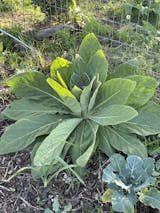Food Storage Prepping in the Garden: Amaranth Posted on 18 Sep 12:41 , 1 comment
Have you enjoyed our Prepping in The Garden series so far?
As promised, we are adding a "print" version of our videos on our blog and including growing information for each topic. Today we're sharing about Amaranth.
Amaranth is a heat tolerant crop that can be grown for it's leaves as well as seeds. From seed to harvest, you can begin harvesting leaves as early as 30 days. To harvest seeds, it can take 90-110 days (sometimes longer).
This is one of the varieties that I consider a "double duty crop" since you can use both the leaves and the seeds. The young leaves are delicious eaten raw or cooked. The larger leaves, I prefer to cook. You can prepare amaranth leaves the same way you would spinach and/or collards.
The seeds are cooked similar to quinoa or rice. We will have a seed harvesting video available very soon.
Growing Amaranth from Seed
Amaranth seeds are very tiny so they should be sown just barely under the soil. I have even "tossed" a packet of seeds onto the soil at times and the seeds have germinated very well. Soil should be moist but not waterlogged for optimal germination. Once planted, Amaranth seeds germinate in 3 to 10 days. These heat tolerant plants are very hardy but I still prefer to direct sow instead of transplant.
Amaranth thrives in full sun and while it can tolerate periods of drought, it is best to keep the soil watered.
One good feeding of a liquid fertilizer such as Mountain Flower Compost tea is recommended during the earlier stages of growth. Otherwise, this beauty does not require much more than sun and water. Hot weather is a bonus!
Harvesting Amaranth
As we showed in the video, harvesting leaves from Amaranth plants is very easy. A small pair of scissors or a snip with your fingernail works.
The leaves are quick to perish after harvesting so you'll need to preserve them right away. They can be blanched and frozen for future use or dried to store in a jar. If you choose to dry them, make sure they are fully dried out prior to storing.
When the seed heads are ready to harvest, that's the more tricky part. Wait until the seed heads are very mature and almost dry to harvest.
Cut the entire seed head and hang to dry over a tray or tarp to collect any seeds that might fall.
To collect the seeds, rub your hands over the seed head or gently shake.
Store seeds in an airtight container for future use.
FOOD STORAGE PREPPING IN THE GARDEN (on the blog)
Food Storage Prepping in the Garden: COWPEAS
FOOD STORAGE PREPPING IN THE GARDEN (videos)












Comments
Jeanne on
What do you do with the dried flowers that fall in with the seeds. What’s the best way to separate them?
Thanks